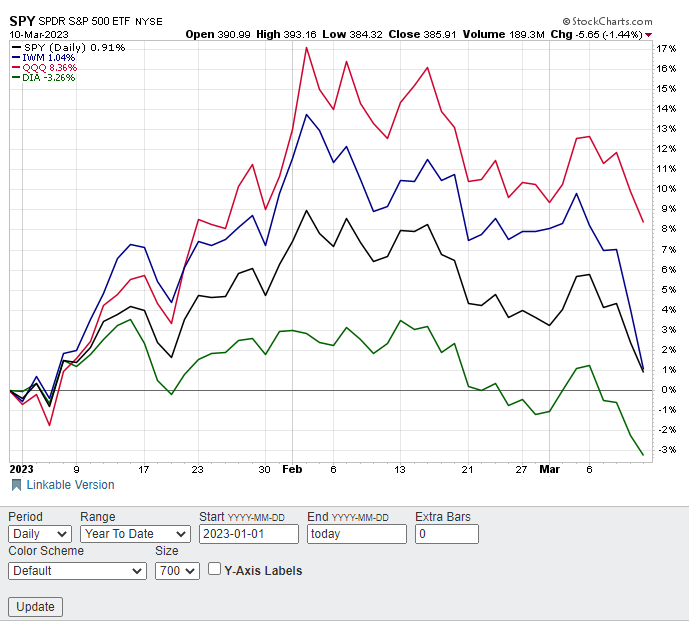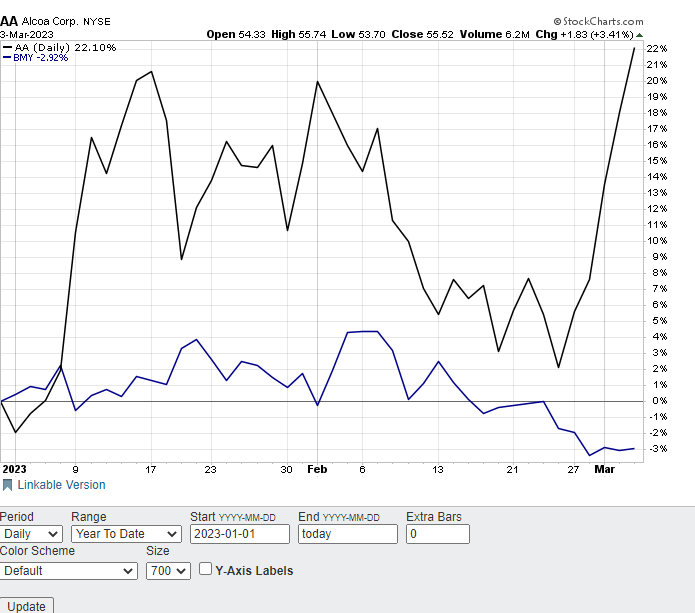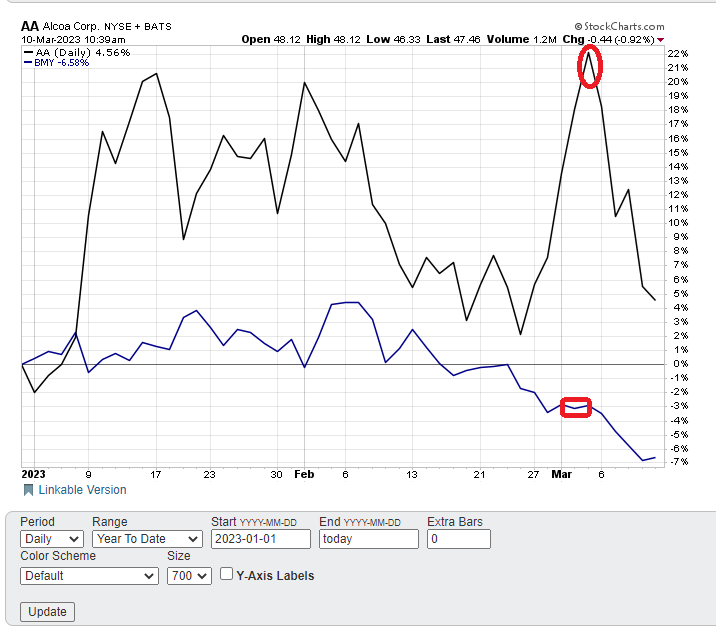How to strengthen the POWR pairs trades to lower risk and increase returns in a wide range, no change in the market environment.
After a stormy start to 2023, stocks are down almost unchanged again this year.
The NASDAQ 100 (QQQ) is still trading nicely at just over 8% so far in 2023, but that’s more than down more than 50% from early February highs. The S&P 500 (SPY) and Russell 2000 (IWM) have fallen further, holding onto slight gains for the year. The Dow Jones Industrials (DIA) are now firmly in negative territory in 2023.

By 2022, the tables had turned, with DIA being by far the best performer (just under 14%) of the four indices, while QQQ (down more than 25%) was the worst.
This type of wide-range, no-change market environment makes buying stocks more difficult and puts a clear premium on stock selection. Using the POWR ratings to discover the best stocks to buy and the worst stocks to sell will be an even more decided advantage in 2023.
That’s exactly the approach we’ve used with great success in powr options. A POW links trade to cash in on the term.
We start by looking at bullish calls on the highest-rated stocks and bearish puts on the lowest-rated stocks. This eliminates much of the overall market exposure and distills relative performance down to the strength of the POWR ratings. Higher-rated stocks significantly outperform lower-rated stocks, as shown in the chart below.
We then identify situations where the lower-rated stock has far outperformed the higher-rated stock and is able to benefit from the expected convergence of the two back to a more historically traditional relationship. In the past, we consistently used this pairing philosophy with two stocks in the same sector to further dampen risk.
We also always consider implied volatility (IV) in every trading decision. POWR Options buys relatively cheap options to increase the overall odds in our favor.
However, in our latest POWR Pairs Trade, we decided to forego the same industry requirement and look only at buying good stocks that are underperforming and shorting bad stocks that are underperforming.
It ended up being a very viable complementary approach to our pairs trading philosophy. A short walk through our latest POWR Pairs Trade will shed some light.
While not a “traditional” pairs trade since the two stocks are in different industries, it is still a POWR Ratings performance pairs trade.
Bearish buys turn on the much lower-rated but much-outperforming Alcoa (AA) and buy bullish calls on the much-higher-valued but much underperforming Bristol-Myers Squibb (BMY).
D-Rating -Sell- Alcoa (AA) is trading at yearly highs for 2023, up 22%.
A valued -Strong Buy-Bristol Myers (BMY) is just outside the yearly lows, down about 3% year-to-date.
The chart below shows the comparative performance to date in 2023. Note how AA fell sharply in February as BMY hugged the flatline. Since late February, however, AA has exploded higher again, while BMY has drifted lower. The performance difference reached 25%.

Expect AA to be a relative underperformer against BMY in the coming weeks as price performance between the two stocks converges as it has in the past.
On March 3, the POWR Options portfolio bought the AA June $50 puts at $3.90 ($390 per option) and simultaneously bought the BMY June $67.50 calls at $4.20 ($4.20) per option . The total combined expense was $810.
Fast forward to Friday, March 10. You can see how AA has dropped more than 17% since pairs trading started (marked in red). BMY is also down, but only slightly more than 3.5%.

This led to the close of trading in pairs as the spread had converged dramatically. The original performance gap of more than 25% on March 3 contracted, or converged, by more than half to just over 11% on March 10.
Equally important, implied volatility increased in that time frame. This boosted both our long puts on AA and long calls on BMY. The AA puts went from a 53.81 IV to a 56.30 IV. The BMY calls increased from a 21.14 IV to a 22.28 IV.
Exiting the bullish BMY is calling for a USD 120 loss. Got out of the bearish AA move for a profit of $290. The net total profit was $170 ($290 – $120). Actual trading details below.

The net percentage profit on the trade was just over 20% ($170 net profit / $810 initial combined expense). The retention period was only one week. Monday in, Friday out.
Investors and traders looking to generate similar low risks but solid short-term returns may want to consider using the POWR Pairs Trade approach to significantly reduce the downside but still leave a lot of upside open for grabbing profits.
What to do now?
While the concepts behind options trading are simpler than most people realize, applying those concepts to consistently make winning options trades is no easy task.
The solution is to let me do the hard work for you, by starting a 30 day to my POWR Options newsletter.
I have been exploring the best options trading for over 30 years and with the quantitative power of the POWR Ratings as my starting point I have developed a 82% win rate over my last 17 closed trades!
During your trial period, you get full access to the current portfolio, weekly market commentary and every trade alert by SMS and email.
I will be adding the next 2 exciting options trades (1 call and 1 put) when the market opens this Monday morning, so start your trial today so you don’t miss out.
There’s no commitment after the 30-day trial, so there’s absolutely no risk in getting started today.
About POWR options and 30-day trial period >>
Good trade!
Tim Biggam
Editor, POWR Options Newsletter
shares closed Friday at $385.91, down $5.65 (-1.44%). Year-to-date, it has gained 0.91% versus a percentage increase of the benchmark S&P 500 index over the same period.
About the author: Tim Biggam

Tim spent 13 years as Chief Options Strategist at Man Securities in Chicago, 4 years as Lead Options Strategist at ThinkorSwim and 3 years as Market Maker for First Options in Chicago. He makes regular appearances on Bloomberg TV and is a weekly contributor to the TD Ameritrade Network “Morning Trade Live”. His main passion is to make the complex world of options more understandable and therefore more useful for the everyday trader. Tim is the editor of the POWR options newsletter. Read more about Tim’s background, along with links to his most recent articles.
The mail Is it better to be bullish or bearish? Being both is the best approach appeared first on StockNews.com
